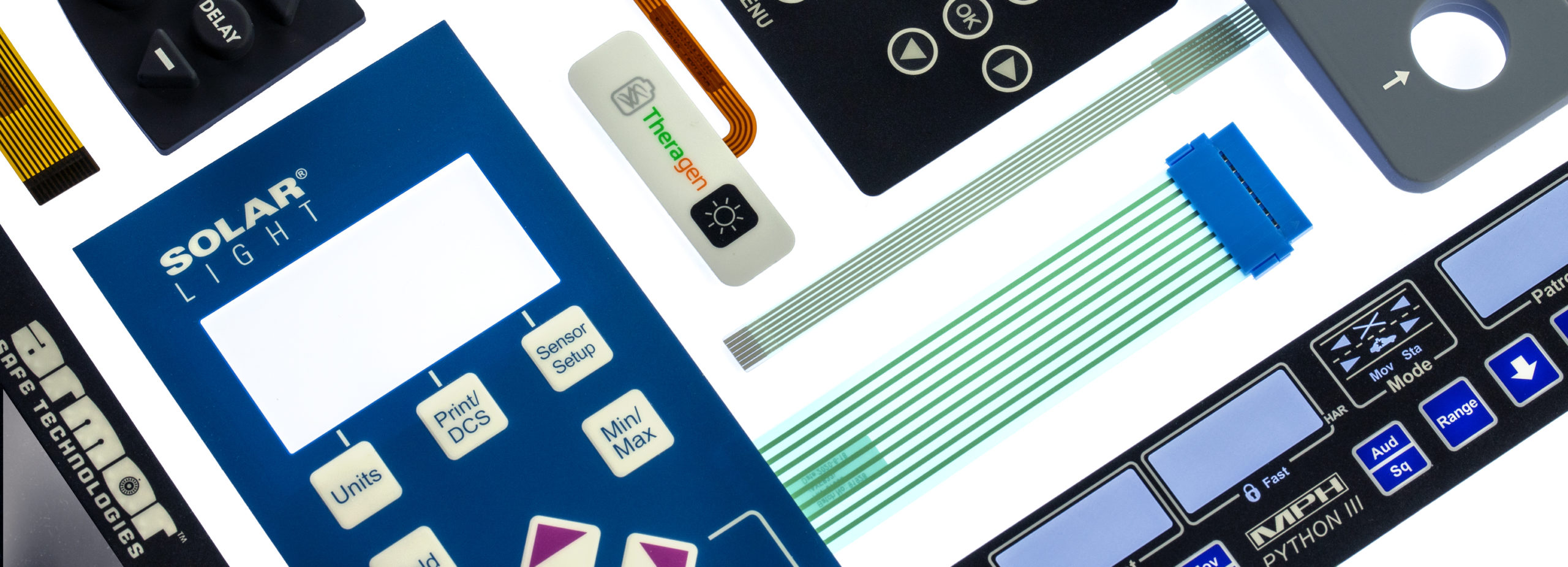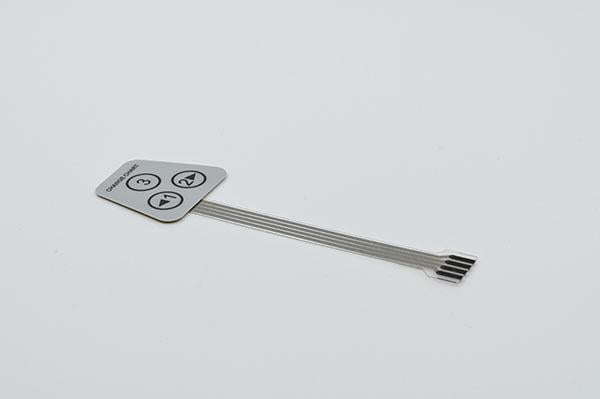Every well-executed product line begins with choosing the right membrane switch manufacturer early on.
Every well-executed product line begins with choosing the right membrane switch manufacturer early on.
Blog Article
Everything About Membrane Layer Switch Over: Recognizing Its Style and Functionality
When you think of the control user interfaces in modern tools, membrane buttons often come to mind. These parts are greater than simply switches; they blend layout and performance perfectly. Recognizing exactly how they function and what makes them effective can transform your point of view on day-to-day electronics. There are nuances to their style and efficiency that you might not be mindful of. Let's discover what collections membrane layer switches over apart from other control systems.
What Are Membrane Layer Buttons?

Membrane layer switches can also be tailored pertaining to shape, dimension, and graphics, enabling suppliers to create distinct interfaces tailored to details products. In general, membrane layer switches play a substantial role in improving user experience throughout a wide range of applications.
Just How Membrane Switches Job
When you press a trick on a membrane button, it turns on a straightforward yet effective mechanism. membrane switch manufacturer. The leading layer, commonly made of versatile material, pushes down onto a conductive layer below it.
You'll see that the tactile responses varies based upon the switch layout, providing either a soft click or an extra obvious response. As soon as you launch the trick, the membrane layer returns to its original placement, resuming the circuit and quiting the signal. This procedure occurs nearly instantly, making sure a responsive individual experience.
Membrane layer switches are prominent because of their resilience and resistance to dirt and moisture, making them excellent for different applications, from family home appliances to medical devices. Understanding this procedure aids you value their extensive use.
Trick Parts of Membrane Layer Buttons
Understanding the key components of membrane layer buttons is fundamental for realizing their performance and design. The safety layer shields versus environmental elements and wear, expanding the switch's lifespan. By comprehending these elements, you'll acquire understanding into how membrane changes run and their relevance in various applications.
Materials Utilized in Membrane Layer Switch Over Layout
The efficiency and resilience of membrane changes heavily depend on the materials made use of in their design. You typically experience polyester and polycarbonate as primary substrates as a result of their exceptional toughness and versatility. These materials resist scratches and chemicals, making them perfect for requiring atmospheres.
The conductive layers commonly utilize silver or carbon, chosen for their integrity and conductivity. membrane switch manufacturer. Silver gives exceptional performance, while carbon is an affordable option. For the overlay, you could consider a matte or glossy finish, relying on your visual demands and individual experience
Make particular to pick adhesives that endure environmental elements like temperature level and humidity. Selecting the ideal materials will ensure your membrane layer button stands the test of time.
Layout Factors To Consider for Membrane Switches
While designing membrane switches, it's vital to think about numerous factors that influence their capability and customer experience. Beginning by concentrating on the design and switch dimension; make specific they're user-friendly and easy to browse. Consider the tactile comments you desire to supply-- will customers need a recognizable click or a softer touch? In addition, think of the products you'll make use of, as they'll affect toughness and appearances.
Verify your layout suits ecological variables, like dampness or temperature variants, which might affect efficiency. By carefully taking into consideration these elements, you'll create a membrane switch that enhances use and fulfillment.
Applications of Membrane Buttons
Membrane layer switches are flexible components located in numerous applications, from commercial equipment to customer electronic devices. You'll see their impact in visit machines that call for durable interfaces and in tools that take advantage of smooth styles. Comprehending these applications aids you appreciate the functionality and practicality of membrane switches in daily innovation.
Industrial Devices Usage
When you're looking to improve the capability of industrial devices, membrane buttons use a reputable remedy that combines durability with easy to use design. These buttons are ideal for severe environments, providing resistance to dust, moisture, and chemicals. Welcome membrane layer buttons to streamline your procedures and enhance overall performance.
Consumer Electronic Devices Integration
In the domain name of customer electronic devices, membrane switches play a crucial function in enhancing individual interaction and tool capability. You'll locate them in gadgets like microwaves, push-button controls, and gaming consoles, providing a seamless method to connect with innovation. Their smooth design permits simple combination right into various items, making controls instinctive and user-friendly. With their capacity to incorporate graphics and backlighting, you can appreciate a contemporary visual that enhances the gadget's general appearance. Membrane Your Domain Name layer switches likewise assure toughness and resistance to dirt and moisture, extending the life-span of your electronic devices. By selecting membrane layer switches, you enhance not just the functionality yet likewise the style of your devices, making daily communications smooth and delightful.
Benefits and Negative Aspects of Membrane Switches
While membrane layer buttons use a variety of advantages, they likewise feature some downsides that you need to consider. One substantial advantage is their compact layout, making them ideal for space-constrained applications. They're additionally affordable, supplying a durable service with a reduced manufacturing cost. On top of that, their seamless surface is simple to tidy, enhancing health in atmospheres like healthcare facilities.

Membrane layer buttons can have a much shorter life-span contrasted to mechanical switches, specifically under heavy usage. They can likewise be much less tactile, which may impact customer responses throughout operation. Balancing these pros and cons will help you determine if membrane buttons are the ideal fit for your project.
Often Asked Inquiries
For How Long Do Membrane Switches Commonly Last?
Membrane switches normally last between 5 to one decade, depending upon usage and environmental conditions. You'll desire to assess factors like wear, direct exposure to moisture, and temperature level fluctuations to gauge their long life effectively.
Can Membrane Layer Switches Be Customized for Specific Styles?
Yes, you can tailor membrane buttons to fit details layouts (membrane switch manufacturer). You'll have the flexibility to select shades, forms, and formats that match your project's demands, ensuring they mix effortlessly with your general visual
What Is the Cost Array for Membrane Layer Change Manufacturing?
The cost array for membrane layer button manufacturing commonly falls between $1 and $10 each, relying on aspects like style complexity, quantity, and products. You can obtain quotes from manufacturers to discover the most effective option.

Are Membrane Layer Switches Waterproof or Resistant?
Membrane switches can be designed to be water-proof or immune, relying on materials utilized and building techniques. If you require them for damp settings, ensure you define those needs during the style procedure.
How Do Membrane Layer Switches Contrast to Traditional Switches?
Membrane buttons are typically thinner and more adaptable than traditional switches, using a sleek design. They're usually easier to clean and incorporate, yet might not provide the responsive feedback you're used to with mechanical alternatives.
Verdict

Report this page